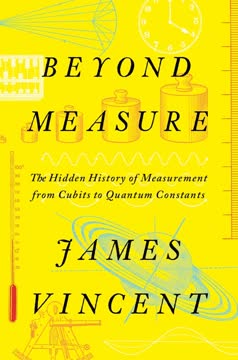Key Takeaways
1. Measurement is a Cornerstone of Cognition and Civilization.
Measurement has not only made the world we live in, it has made us too.
Fundamental cognitive act. Measurement is deeply ingrained in human cognition, enabling us to perceive boundaries, compare realities, and build knowledge. It's a skill acquired with age, requiring the ability to abstract and create intermediaries like units. Early notched bones, like the Ishango Bone, suggest measurement emerged when human ambition exceeded the brain's capacity to count at a glance.
Root of progress. The ability to measure is foundational to tectonic arts like construction and urban planning, and the beginning of quantitative science. Without measurement, observation, experimentation, and learning about the world would be impossible. It allows us to record the past, uncover patterns, and predict the future.
Ordering principle. Measurement is an invisible, ubiquitous ordering principle in modern life, affecting everything from the physical objects we interact with to intangible social guidelines like clocks and calendars. It is a practice invented and imposed by humanity, reflecting what we value and choose to focus on in the world.
2. Early Measures Were Rooted in the Body and Everyday Life.
Using our bodies to measure the world makes intuitive sense.
Body as the first tool. The earliest and most accessible tools for measurement were human bodies, giving rise to units like the hand, foot, cubit (elbow to fingertip), and fathom (outstretched arms). Cultures worldwide developed rich indexes of measure from body parts, providing scales appropriate to human activity and always at hand.
Everyday life units. Many pre-modern measures were defined by the practicalities of daily life, often elastic and changing with their environment. Examples include:
- The Finnish peninkulma, the distance a dog's bark could be heard (~6 km).
- The Irish collop, the amount of land needed to graze a single cow.
- The Ojibwe measure of distance by the number of tobacco pipes smoked on a journey.
Descriptive capacity. These units were not just measures but also conveyed information about terrain, accessibility, or necessary supplies. They were "reckoned on the things a man could see about him," providing an almanac wherever one was, reflecting a worldview prioritizing locality and tradition.
3. Measurement Became a Crucial Tool for Social Order and State Power.
As a result, the regulation of units of measure has been embraced by various political systems over the millennia.
Beyond practical utility. Measurement was valued not just for construction or trade, but for its ability to create shared expectations and rules, mediating interactions and ensuring trust. This made it a tool for constructing social order and was often claimed as a prerogative of the powerful.
State control. From ancient Mesopotamia (Code of Hammurabi) to medieval Europe (Magna Carta), laws against false measures were severe, reflecting the understanding that cheating eroded trust throughout a community. Rulers used measurement to organize the world to their liking, assessing wealth, levying taxes, and coordinating resources.
Symbol of authority. Measurement standards became symbols of political authority, from Gudea's statue with a ruler to ceremonial measuring rods. The regulation of measures was seen as a duty of rulers, necessary for justifying their rule alongside punishing criminals or maintaining roads.
4. The Scientific Revolution Expanded Measurement's Domain to Nature.
Measurement was the discipline of builders and traders, not thinkers.
Shift in intellectual culture. Prior to the scientific revolution (15th century onwards), intellectual convention limited measurement to practical tasks, viewing the material world as too unstable for empirical study. Knowledge was sought through abstract thought and understanding underlying "causes" or purposes (Aristotle's teleology).
New appreciation for observation. The scientific revolution, influenced by figures like Francis Bacon and Galileo, brought a new emphasis on experimentation and observation. Measurement became vital for understanding natural phenomena, challenging older, qualitative explanations.
Quantifying the world. Thinkers like the Oxford Calculators began applying mathematical and quantitative approaches to natural philosophy, analyzing motion and change in numerical terms. This paved the way for figures like Galileo and Newton to mathematize the universe, replacing teleological explanations with mechanical ones based on observable cause and effect.
5. Quantifying Nature Led to New Concepts Like Temperature and Energy.
The scientific instrument had begun to displace human experience as the arbiter of reality.
Measuring the intangible. The quantifying spirit of the scientific revolution extended to phenomena previously understood qualitatively, like heat and cold. Early thermoscopes, lacking standardized scales, still showed that instruments could reveal truths about temperature that contradicted human senses.
Establishing fixed points. Creating reliable temperature scales required finding stable thermometric markers, like the freezing and boiling points of water. Scientists like Fahrenheit and Celsius worked to establish these fixed points, allowing for consistent and verifiable temperature measurement.
Thermodynamics and energy. The study of heat led to the development of thermodynamics, revealing heat as a form of motion (energy). This new understanding, formalized by figures like Thomson and Clausius, allowed for the definition of temperature based on fundamental physical principles, like absolute zero, rather than arbitrary scales or the behavior of specific substances.
6. The Metric System Embodied Revolutionary Ideals of Rationality and Universality.
These would be weights and measures à tous les temps, à tous les peuples: for all times and for all people.
Response to chaos. The metric system originated during the French Revolution to replace the arbitrary and inconsistent units of the Ancien Régime, which hampered trade and exploited commoners. The demand for standardization was widespread, seen as necessary for social and economic reform.
Rational and natural basis. Designed by French savants, the metric system aimed for universality by basing units on nature: the metre as a fraction of the Earth's meridian and the kilogram as the mass of a cubic decimetre of water. It was decimalized for ease of calculation and given a new, rational taxonomy of names.
Symbol of a new order. The metric system was intertwined with republican ideals, seen as a tool to eliminate feudal inequalities and empower citizens through rational calculation. Despite its high-minded goals, its implementation faced resistance and practical challenges, leading to temporary abandonment before its eventual global adoption.
7. Measurement Became a Tool for Abstracting and Controlling Land and People.
The great slogan of the day is uniformity.
Tools of legibility. States have historically used tools like land surveys and censuses to standardize and simplify society, making it more legible and easier to administer. This process often involves replacing local, particular forms of knowledge with universal, abstract ones.
Land surveys and conquest. Land surveys, like the Roman centuriatio or the US Public Land Survey System (PLSS), were instrumental in organizing territory for taxation, settlement, and military control. In the US, Jefferson's grid survey facilitated westward expansion and the dispossession of Native American lands, abstracting complex indigenous relationships to the land into simple, marketable plots.
Abstraction and alienation. While abstraction allows for organization and control on a vast scale, it can also lead to "world alienation," disconnecting individuals from local experience and community. The imposition of uniform systems, whether land grids or standardized measures, can erase cultural particularities and create tensions between universal rules and individual realities.
8. Statistics Emerged to Measure Society, Revealing Patterns and Perils.
It is society that prepares the crime; the guilty person is only the instrument who executes it.
Quantifying human life. Statistics emerged from "political arithmetic," the numerical study of populations, pioneered by figures like John Graunt. Analyzing aggregate data on births, deaths, and diseases provided states with invaluable insights into their populations, enabling new forms of governance and public health interventions.
Social physics. Adolphe Quetelet applied statistical methods from astronomy to social data, seeking universal laws governing human behavior. His concept of the "average man" and observations of statistical regularities in crime and marriage rates suggested that individual choice was less significant than societal forces.
Perils of quantification. While statistics can reveal important patterns and spur social reform (like Charles Booth's poverty maps), they can also oversimplify complex realities and be misused. The reification of statistical averages and categories, particularly in the eugenics movement and IQ testing, led to pseudoscientific justifications for prejudice and horrific atrocities.
9. The Battle of Standards Reflected Deeper Cultural and Political Conflicts.
For the UK’s Active Resistance to Metrication organisation, retaining traditional units of measurement is a battle for the nation’s soul.
Rival systems. The rise of the metric system sparked a "Battle of the Standards" with the British Imperial and US Customary systems, the only viable rivals. This conflict was not just about technical superiority but reflected deeper cultural, political, and even religious divides.
Arguments for tradition. Anti-metric sentiment often emphasized the perceived naturalness and practicality of imperial units, rooted in the human body and easier for everyday calculations. Opponents framed metrication as a foreign imposition, a threat to national identity, and a tool of elites or bureaucrats.
Entrenchment and compromise. Despite the metric system's scientific advantages and global spread (often following Napoleonic conquests or adopted as part of nation-building), imperial measures persisted in the UK and US due to established industrial capital, cultural familiarity, and political inertia. This resulted in ongoing compromises and dual systems, reflecting the difficulty of changing deeply embedded measurement habits.
10. Modern Measurement Transcends Physicality, Shaping Our Understanding of Reality and Ourselves.
As of Today, the Fundamental Constants of Physics (c, h, e, k, NA) Are Finally . . . Constant!
Beyond physical standards. Modern metrology has moved beyond physical artifacts like the IPK kilogram, defining units using fundamental constants of nature (like the speed of light and Planck's constant). This makes definitions theoretically universal and immutable, though their realization requires complex, expensive technology.
Unseen infrastructure. Standards organizations like NIST and ISO create vast libraries of standard reference materials, providing benchmarks for industries worldwide. This unseen infrastructure ensures consistency and trust in everything from food composition to manufacturing precision, enabling global trade and consumer culture.
Quantifying the self and society. Measurement increasingly pervades personal life through self-tracking technologies and shapes societal interactions via algorithmic decision-making and social credit systems. This "metric fixation" reflects a desire to control and optimize, but also raises concerns about privacy, autonomy, and the potential for bias and oversimplification when complex human realities are reduced to numbers.
Last updated:
FAQ
What is Beyond Measure: The Hidden History of Measurement from Cubits to Quantum Constants by James Vincent about?
- Comprehensive history of measurement: The book traces the evolution of measurement from ancient units like cubits to modern quantum constants, revealing its deep entwinement with civilization, science, and society.
- Interdisciplinary exploration: Vincent combines history, science, philosophy, and culture to show measurement as both a technical tool and a social, political force.
- Impact on human understanding: The narrative demonstrates how measurement systems have shaped our perception of the world and ourselves, influencing everything from public health to personal self-tracking.
Why should I read Beyond Measure by James Vincent?
- Reveals measurement’s hidden world: The book uncovers the surprising complexity and history behind everyday units, showing their evolution and redefinition through science and politics.
- Connects measurement to society: Vincent links measurement to the rise of civilizations, scientific revolutions, and modern management, offering insights into how it shapes our organization of the world.
- Explores philosophical and social implications: The book encourages readers to reflect on who controls measurement, its dual role as a tool of empowerment and control, and its impact on social justice and oppression.
What are the key takeaways from Beyond Measure by James Vincent?
- Measurement as a cognitive cornerstone: Measurement enables humans to compare, describe, and understand the world, setting us apart from other animals.
- Dual nature of measurement: It serves as both a tool of knowledge and authority, empowering societies but also enabling control and oppression.
- Ongoing evolution and debate: The book highlights the continual redefinition of standards, the tension between universal and local systems, and the philosophical challenges of abstraction versus particularity.
How did measurement originate according to Beyond Measure by James Vincent?
- Early tally marks: The first evidence of measurement comes from notched animal bones used as tally sticks, representing humanity’s initial attempts to externalize counting.
- Body-based units: Early societies used body parts (cubit, hand, foot) as accessible and proportionate standards for measurement.
- Cultural and cognitive development: Measurement is shown as a learned cultural skill, not innate, with children and societies progressing from estimation to standardized tools.
What role did measurement play in ancient civilizations as described in Beyond Measure?
- Foundation of civilization: Measurement enabled construction, trade, and astronomy in ancient societies like Egypt and Mesopotamia.
- Tool of authority: Elites such as priests and kings controlled measurement to organize society, enforce laws, and legitimize power.
- Spiritual and cosmological links: Measurement was intertwined with religious beliefs, calendars, and rituals, connecting it to divine favor and cosmic order.
How did the scientific revolution transform measurement, according to James Vincent?
- Shift to quantification: The scientific revolution moved from qualitative to quantitative understanding, using measurement to unlock nature’s laws.
- Mechanical philosophy: Thinkers like Descartes and Newton viewed the universe as a machine governed by measurable laws, replacing mystical explanations.
- Invention of instruments: Innovations like the telescope, clock, and thermometer expanded the reach of measurement into new domains.
What is the "quantifying spirit" in Beyond Measure and how did it shape science?
- Empirical measurement mania: The 17th-18th centuries saw a drive to measure everything, reflecting a belief in empirical knowledge and control over nature.
- Development of thermometry: The evolution of temperature measurement, from early thermoscopes to reliable scales, illustrates the challenges and breakthroughs in defining standards.
- Cultural and philosophical impact: Measurement demystified natural phenomena but also created new scientific mythologies, reshaping how society viewed the world.
How did the metric system originate and what were its political implications in Beyond Measure?
- Revolutionary standardization: The metric system was created during the French Revolution to replace arbitrary units with natural, universal standards.
- Decimal and rational design: It introduced interconnected, decimal-based units, reflecting Enlightenment ideals of reason and equality.
- Political and social tensions: The metric system faced resistance and embodied contradictions, becoming a battleground for debates over naturalness, practicality, and authority.
How does Beyond Measure describe the battle between metric and imperial measurement systems?
- Historical context: The book details the slow, contested adoption of the metric system, especially in the UK and US, where imperial units have deep cultural roots.
- Cultural and political resistance: Groups like ARM and the ‘Metric Martyrs’ illustrate how measurement debates are tied to identity, sovereignty, and tradition.
- Arguments and myths: Vincent explores both practical arguments for imperial units and pseudoscientific beliefs, showing measurement’s role in national and cultural identity.
What is the significance of the redefinition of the kilogram in Beyond Measure by James Vincent?
- From artefact to constants: The kilogram’s definition shifted from a physical object (Le Grand K) to being based on Planck’s constant, a fundamental quantum value.
- Quantum metrology: The Kibble balance allows mass to be measured via electromagnetic forces, making the kilogram universally stable and permanent.
- Philosophical implications: While more precise, the new definition ‘blackboxes’ measurement, making it less accessible to the public and raising questions about universality versus comprehensibility.
How does Beyond Measure explain the rise and impact of statistics and the concept of the "average man"?
- Quetelet’s social physics: Adolphe Quetelet introduced the idea of the ‘average man’ as a statistical regularity, influencing social sciences and public policy.
- Transformation of statistics: The average became seen as a real quality of groups, sparking debates about free will, determinism, and the dangers of reducing humans to numbers.
- Legacy and critique: The concept influenced figures like Florence Nightingale and Karl Marx, but also faced literary and philosophical rebuttals emphasizing individual variability.
What are the key philosophical and social critiques of measurement discussed in Beyond Measure by James Vincent?
- Measurement as control and limitation: Measurement imposes limits, categorizes reality, and reflects human biases, making it a tool of both knowledge and oppression.
- Philosophical perspectives: The book draws on thinkers like Charles Sanders Peirce, Aristotle, and William Blake to explore the fallibility, abstraction, and imaginative limits of measurement.
- Modern implications: Vincent discusses how measurement’s abstraction can alienate individuals and societies, but also create new forms of understanding, urging critical awareness of who controls measurement and why.
Review Summary
Beyond Measure explores the history and impact of measurement from ancient times to modern quantum standards. Readers found it engaging, well-researched, and thought-provoking, appreciating the blend of science, history, and social commentary. The book examines how measurement shapes our understanding of the world and its connections to power structures. While some criticized parts as tedious or biased, many praised Vincent's ability to make a seemingly dry topic fascinating. The book's exploration of measurement's role in colonialism, eugenics, and modern society particularly resonated with readers.
Similar Books
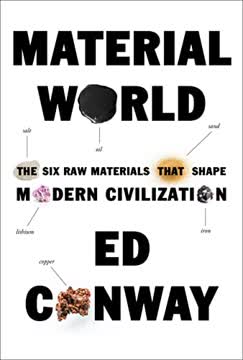
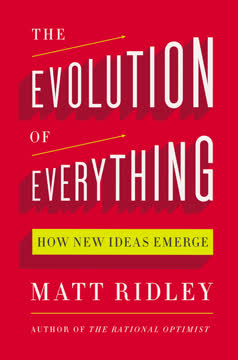
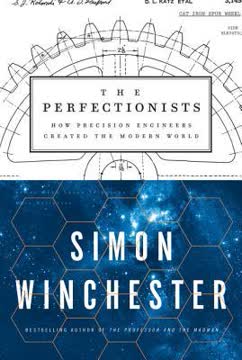
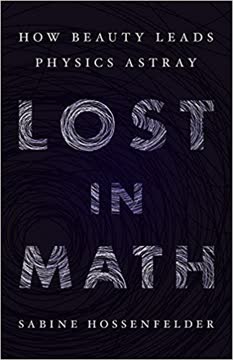
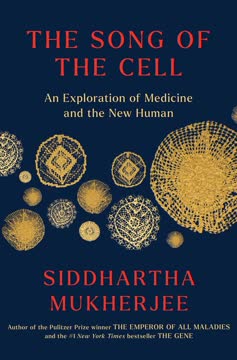

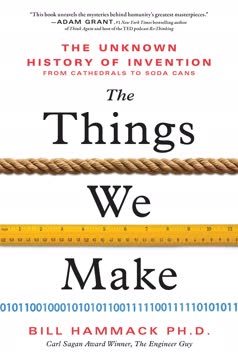
Download PDF
Download EPUB
.epub digital book format is ideal for reading ebooks on phones, tablets, and e-readers.
